I spent last week in the woods, hiking through the tramped snowbanks of scattered sections of the Bruce Trail. It could not have been more distinct from Samson’s surroundings, with an iguana living in the waving palm tree outside of his apartment. It’s fresh in the woods, clear. You can sneak up on your thoughts, ones that wouldn’t be home otherwise, from directions you wouldn’t otherwise consider. All the time walking in past footsteps that have beaten the snow into something slick and intentional.
My dog, Millie, trod the trails with my wife Amanda and me. She’s a snow dog, and even though it’s her first time ever seeing drifts as tall as her, she knew exactly what to do. She bounded, burying herself up to her neck, leaping in and out of the fresh snow like an arrhythmic jack in the box, while we kept pace alongside. We’d stick to our paths, well defined, and she’d wander and romp and bury her head in every hole she found, trying to eat her way out.
Millie and I saw the paths differently. They directed me, told me the way home. She saw them as obstacles, things that got in the way of playing in the snow. She’s only a puppy and learning how to walk properly on lead. We’d have to leash her if we saw other people or dogs. And ordinarily, she’s quite good on a leash. But with mountains of snow in every direction, and forced to walk in the path alongside us, she was constrained beyond imagination. The injustice. She’d throw tantrums if we kept her on the path too long, writhing and pounding her paws into the beaten snow like a child at the grocery store.
Paths can be soothing. Yes, they tell you where to go, but that’s not always a bad thing. One day Amanda and I took a route that was unmaintained, and we ended up fighting through the mud, eventually giving up and returning to the prescribed path. It was a relief to see again. To Millie, though, paths were nothing but a nuisance. Perspective.
This week in Minute Basketball: path dependence.
Folk
Lu Dort is just like me
Straight-on, and above-the-break 3’s are typically dominated by superstars or wildly dynamic shooters. The corners of the court are these weird segmented planes teams nudge their non-shooters into, and request they learn to shoot at somewhere near the league average. Every once in a while, a real fire hydrant like PJ Tucker will take what is the NBA’s most static shot outside of free throws, and dominate it in their own way. Dedicate yourself to it. Hammer out the muscle memory, and suddenly you’re a weapon in the NBA. If you defend and you space the floor (albeit in a somewhat limited sense), you’ll find yourself on an NBA roster regardless of any ongoing trend league-wide. Tucker has been the NBA’s most prolific corner shooter for some time - above 90th-percentile in every one of the last 9 seasons - and has provided a bit of a blueprint.
Dort has followed the path, at least in part. In OKC’s heated playoff series with the Rockets he was undoubtedly the go-to option to defend James Harden on the Thunder roster (if not the league), but their offense was plagued by his lack of offensive punch. The skills that lined Dort’s offseason to-do list were obvious, and the only thing left was the work. What’s rare though, is to see a player incorporate new skills at game speed as rapidly as Dort did. Ten games into the season, and he’s the NBA’s best corner shooter (among wings) at an absurd 56-percent. And 44-percent across the board is nothing to sneeze at either. Quite frankly, the totality of his shooting profile this year is staggering.
A wrench has been thrown in the game plan (if there was one for him). He won’t playmake, at all, but if he’s attacking a closeout, or launching over one - he’s good as hell.
So, a staunch isolation defender adds high-quality spot-shooting to his resume, that sounds expensive. But is it? To you and I, yes, almost assuredly. To an NBA team? Not at all, as it turns out.
Dort came into the NBA through the backdoor. A two-way player who scraped and clawed his way onto the Thunder who loved his defense. As has been the case for some time, the Thunder had trouble sorting out their wing rotation, and Dort rose to the occasion. Prior to the bubble, Dort signed a four-year minimum salary contract that will see him paid less than two million every season until the contract ends, with the added kicker that next year is only partially guaranteed (300k) and 2022-23 is a team option.
A playoff starter at 155k. The guy who almost swung a game seven against the pseudo-contending Rockets, by pouring in six threes by way of his delayed, crossbow style, lock n’ load jumpshot. And now, a legitimate ‘3 and D’ player for way below market value. It’s so much less than he’s owed.
That’s why he’s like me, or you. Dort didn’t have the comfort or power to gamble with millions of dollars. Of course he’s worth so much more now, and will be for a few years at the very least, but he assured himself some comfort, and the Thunder feasted on that insecurity. I’m underpaid, you’re probably underpaid, Dort is underpaid, and the idea of striking out in a way that could potentially earn us more, but alternatively could bring chaos into our lives, is scary as hell. Not everyone has the iron-clad spirit to rock the ‘Bet on Yourself’ mantra like Fred VanVleet.
Here’s hoping all of us are making more money in a few years. Something closer to our worth. Whether that’s off the path, or on it.
Zatzman
The value of changing paths
Manu Ginobili changed basketball for the better. He didn’t invent the eurostep -- you can credit the hyper-talented Lithuanian Sarunas Marciulionis for that -- but Ginobili supercharged it. Turned it into a basketball move akin to the unbeatable Five Point Palm Exploding Heart Technique.
There’s a reason people call Ginobili innovative. He makes it up on the fly. It’s like jazz. It’s all improvisation. There’s something to that, not in that it’s necessarily true, but in that it accidentally describes Ginobili’s great strength: defenders could not lock him into one path. He never committed, even after he picked up his dribble. Just when you thought Ginobili’s weight and momentum were ironclad, he would evaporate and appear a foot in the other direction.
Once upon a time, NBA players chose a direction and beat you to it. Through speed and strength, they couldn’t be stopped. Put another way, they walked the yellow brick road until they reached the emerald city, or not. Ginobili learned how to travel cross country. He changed the game, introducing the ability to change his mind. Guarding him was like playing chess with an opponent who could shift his light-squared bishop onto the dark squares and vice versa. Unbeatable. There’s a reason no defender could ever figure him out.
Since Ginobili, balance and flexibility are less NBA superpowers and more NBA requirements. Ginobili’s descendants are now as numerous as the stars in the sky (and more numerous than those on the courts). Every guard entering the league needs a passable eurostep, from Delon Wright to Ja Morant. They change direction in first gear, or with nitro boosts. Ginobili’s moves have extended to every area of the league.
But certain players are taking Ginobili’s monster and giving it powers beyond comprehension.
Pascal Siakam may not have evolved the eurostep beyond Ginobili, but no player is as boom or bust when committing to a path. When nobody knows what Siakam is about to do, he’s impossible to cover. He is the ultimate improvisation finisher, comfortable with any release angle from any body position, with the strength to get a shot up and the touch to drip it in off the backboard. His change of speed, spin, shoulder fake, and rip through are all excellent. But when he’s shifting his weight laterally, he unlocks his true form.
When Siakam is not unpredictable, though, he becomes an easy cover. Defenders sit on his spin back to his strong hand, and he remains static, backing opponents into the post, and firing identical shots, one after another. Siakam needs craft because he’s not capable of beating the same defender in the same way all game long.
But when he’s wily? He’s Ginobili but with a seven-foot extension and an equal range from which he can release his layups. Siakam, perhaps more than any player in the league, shows the value of dynamism over stasis.
James Harden has long been linked to Ginobili. He mastered the eurostep many moons ago, and he even recently started adding a change of direction preceding his pull-up triples. Perhaps his greatest innovation, though, is Harden’s ability to remain uncommitted to a singular path even after he goes into his shooting motion.
There’s nobody in the league with a floater and an alley-oop pass that look more similar.
Watch Harden’s arm motion. It’s identical, whether he’s passing or shooting. He keeps his body flush to the rim even as his momentum carries him in different directions. And even when the ball leaves his hand and arcs towards the rim, defenders still don’t know which path Harden has chosen. Harden’s ability to stay aloof and uncommitted may earn him ire off the court, but so too is it his greatest weapon on the court.
The greatest evolution of Ginobili, however, is not Harden but in fact another lefty. Siakam may be the physical evolution of Ginobili. And Harden may have learned to keep options open until the ball leaves his hand. But Zion Williamson has topped them both: he’s learned to do the impossible by remaining uncommitted seemingly even after his feet leave the floor.
Williamson is strong, and he is fast, and those in combination would make him dominant in another era of the league. But Williamson has added craft, too. He boasts elite agility despite his enormous strength. Williamson has body control that hasn’t been mirrored by a player his size since young Shaq.
Pick your jaw up and watch that play again. Williamson positions himself parallel to the baseline as he jumps into the air. Chris Boucher -- a great shotblocker, averaging 2.6 per game! -- is ready to meet Williamson at the summit, or, more likely, get pushed out of the way by Williamson’s chest. But none of that happens. Instead Williamson explodes sideways, avoiding Boucher entirely, and rotating so fast he may as well be teleporting. Jordan may have switched hands midair, but Williamson can switch directions.
There’s no path that can hold Williamson. And as a result, there’s no defense that can contain him, either.



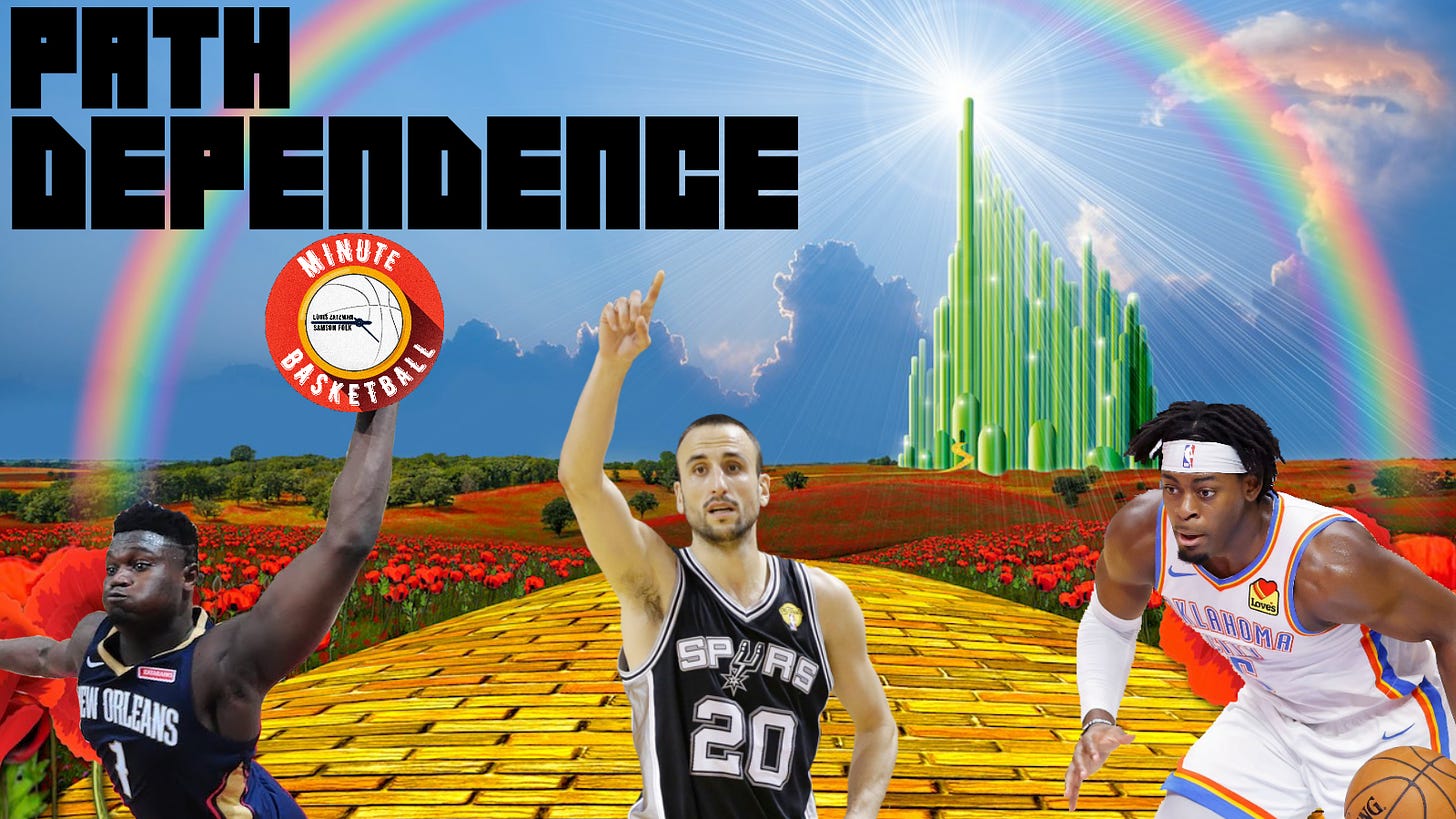
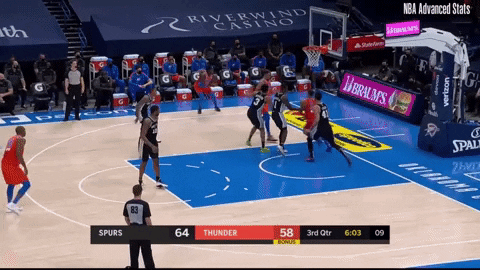
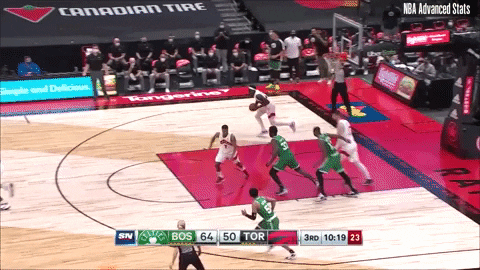
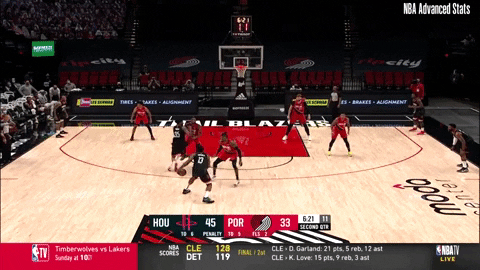
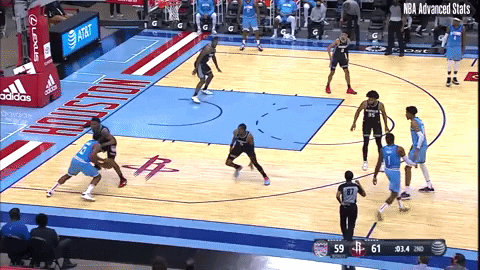
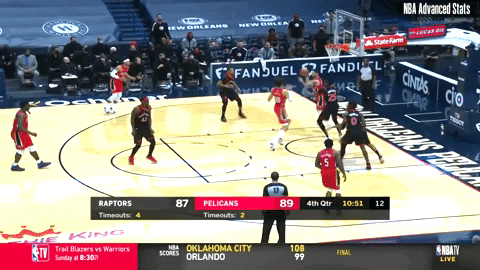






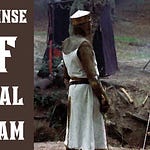


Minute Basketball: Path Dependence